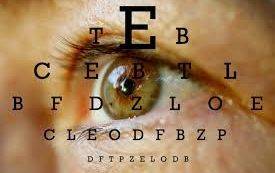If your eyes sting, itch or burn, you may be experiencing the common signs of "dry eye." A feeling of something foreign within the eye or general discomfort may also signal dry eye.
What is dry eye?
Dry eye describes eyes that do not produce enough tears. The natural tears that your eyes produce are composed of three layers:
- The outer oily layer, which prevents or slows evaporation of the tear film;
- The middle watery layer; which moisturizes and nourishes the front surface of the eye;
- The inner mucus layer, which helps maintain a stable tear film.
Dry eye may occur because the volume of tears produced is inadequate (we all produce fewer tears as we get older, and in some cases this can lead to dry eye symptoms). It may result because the composition of the tears has changed so that they are unstable and evaporate more quickly.
What causes dry eye?
Dry eye symptoms can result from the normal aging process. Exposure to environmental conditions, as well as medications, such as antihistamines, oral contraceptives or anti-depressants, can contribute to the symptoms of dry eye. Or, dry eye can result from chemical or thermal burns to the eye. Dry eye may also be symptomatic of general health problems or other diseases. For example, people with arthritis are more prone to dry eye.
Will dry eye harm my eyes?
If untreated, it can. Excessive dry eye can damage tissue and possibly scar the cornea at the front of your eye, impairing vision. Dry eye can make contact lens wear more difficult since tears may be inadequate to keep the lenses wet and lubricated. This can lead to irritation and a greater chance of eye infection. Therefore, it is important to follow the recommended treatment plan.
How is it diagnosed?
During the examination, you will be asked about your general health, use of medications, and work and home environments to determine factors, which may be contributing to dry eye symptoms. This information will help decide whether to perform specific dry eye tests.
To test for dry eye, diagnostic instruments that allow a highly magnified view of your eyes or small strips of paper or thread and special dyes to assess the quantity and quality of the tears may also be used.
How is it treated?
Dry eye cannot be cured, but your eyes' sensitivity can be lessened and measures taken so your eyes remain healthy. The most frequent method of treatment is the use of artificial tears or tear substitutes. For more severe dry eye, ointment can be used, especially at bedtime. In some cases, small plugs may be inserted in the corner of the eyelids to slow drainage and loss of tears.
To keep dry eye symptoms in check, you and your optometrist need to work together. If you have increased dryness or redness that is not relieved by the prescribed treatment, let us know as soon as possible.


